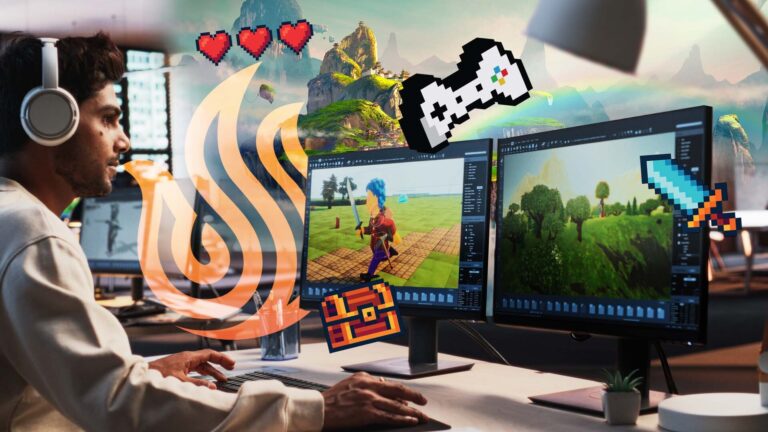When it comes to 3D modeling, choosing the right tool can significantly impact your workflow and creativity. Many artists and designers find themselves debating between using a mouse or a pen tablet for their projects, often weighing the Mouse vs. Pen for 3D Modeling. Each device has its strengths and limitations, and understanding which one suits your needs can enhance your modeling experience.
In this blog, we’ll explore the differences between mouse vs. pen for 3D modeling, providing insights to help you make an informed choice. If you’re interested in learning more about the world of 3D modeling, the Digital Art and Animation program at University of Silicon Valley (USV) provides opportunities to learn and practice foundational skills.
Understanding the Basics
What is 3D Modeling?
3D modeling involves creating digital representations of objects using specialized software. It’s widely used in industries like gaming, animation, visual effects, and product design. Professionals rely on various tools, including a mouse or pen tablet, to sculpt, texture, and manipulate models.
Why the Choice Matters
Your choice between a mouse and a pen affects factors like precision, comfort, and overall productivity. Let’s break down the advantages and challenges of each.
Using a Mouse for 3D Modeling
Advantages
- Familiarity: Most users are accustomed to using a mouse, making it a comfortable choice.
- Cost-Effective: Generally, mice are more affordable than pen tablets.
- Compatibility: A mouse is compatible with nearly all 3D modeling software.
- Precision in Hard Surface Modeling: For tasks requiring straight lines or symmetrical shapes, a mouse can be highly effective.
Challenges
- Limited Natural Movement: A mouse lacks the fluid motion of a pen, which can hinder organic modeling.
- Repetitive Strain: Extended use may cause strain, especially when working on intricate details.
- Lack of Pressure Sensitivity: Unlike a pen tablet, a mouse does not offer pressure sensitivity, limiting artistic expression.
Using a Pen for 3D Modeling
Advantages
- Pressure Sensitivity: Pen tablets allow for greater control over brush strokes, line thickness, and texture application.
- Natural Hand Movement: Artists can work more intuitively, similar to traditional drawing.
- Efficient Sculpting and Texturing: For organic modeling, such as character creation, a pen can be more efficient.
- Ergonomics: Pens are often more comfortable for extended use, reducing the risk of strain.
Challenges
- Learning Curve: Transitioning from a mouse to a pen tablet may take time and practice.
- Cost: High-quality pen tablets can be expensive.
- Space Requirements: Pen tablets often require more desk space compared to a mouse.
Choosing the Right Tool for Your Needs
Consider Your Project Type
- Hard Surface Modeling: If you’re working on mechanical objects, architecture, or product design, a mouse may offer the precision you need.
- Organic Modeling: For sculpting characters, creatures, or detailed textures, a pen tablet can provide better control.
Factor in Comfort and Ergonomics
Think about how long you’ll be working on projects. If you often experience wrist or hand discomfort, a pen tablet might be a more ergonomic option.
Evaluate Your Budget
A mouse is typically a budget-friendly choice, while a pen tablet may be an investment worth considering for advanced projects.
Blending Both Tools
Many 3D artists choose to use both a mouse and a pen tablet, depending on the task at hand. For instance, you might prefer a mouse for technical modeling and a pen for sculpting or detailed texturing.
How Different 3D Software Handles Mouse and Pen Input
Different 3D modeling programs have varying levels of support for mouse and pen input. Software like ZBrush, Blender, and Maya often benefit from pen tablets due to their sculpting tools and texture painting features. Meanwhile, CAD-based software such as AutoCAD or SolidWorks may work more efficiently with a mouse for precise control. Understanding the strengths of each tool within different software environments can help you optimize your workflow.
Common Mistakes When Transitioning from Mouse to Pen
Switching from a mouse to a pen tablet can be a challenge for some artists. Common mistakes include holding the pen too tightly, not adjusting pressure settings, and relying on old mouse habits instead of embracing the pen’s fluidity. Practicing with smaller tasks first and customizing settings in your modeling software can ease the transition and help you get the most out of your pen tablet.
The Role of Shortcuts and Customization
Regardless of whether you use a mouse or a pen, customizing shortcuts can drastically improve your efficiency. Many 3D modeling programs allow users to assign custom hotkeys or create radial menus to speed up workflows. Pen tablets often come with customizable buttons and pressure settings that, when configured correctly, can enhance productivity. Taking the time to set up your tools properly can make a significant difference in your modeling experience.
Maintenance and Longevity
Maintaining your tools is essential for consistent performance. Mice generally require minimal upkeep, aside from cleaning the sensor and ensuring the buttons remain responsive. On the other hand, pen tablets may need replacement nibs over time, and keeping the surface clean can extend the tablet’s lifespan. Knowing how to care for your equipment ensures long-term reliability and productivity.
Collaborating in a 3D Workflow
Collaboration is a key part of many 3D modeling projects, whether in game development, film production, or product design. Understanding how to efficiently share files, receive feedback, and implement changes is crucial. While using a mouse may provide a stable and consistent experience for file navigation and quick adjustments, pen tablets can offer more control for tasks like drawing annotations or making visual edits. Communicating effectively with teammates and understanding the tools they use can lead to a smoother workflow and higher-quality results.
Building Your Skills in 3D Modeling
Whether you choose a mouse, a pen, or both, developing your 3D modeling skills requires practice and guidance. The Digital Art and Animation program at USV offers students the opportunity to explore these tools. Through hands-on learning and mentorship from experienced faculty, you’ll have the opportunity to develop your technique and explore your creative potential.
Conclusion
Choosing between a mouse vs. pen for 3D modeling is ultimately a personal decision based on your goals, comfort, and budget. By understanding the strengths of each device, you can select the tool that best supports your creative process.
To learn more about 3D modeling and how to develop your skills, consider exploring the Digital Art and Animation program at USV. It provides valuable insights into tools and techniques commonly used in the industry.


